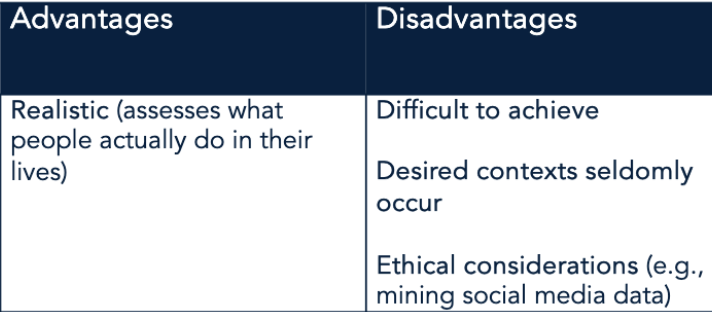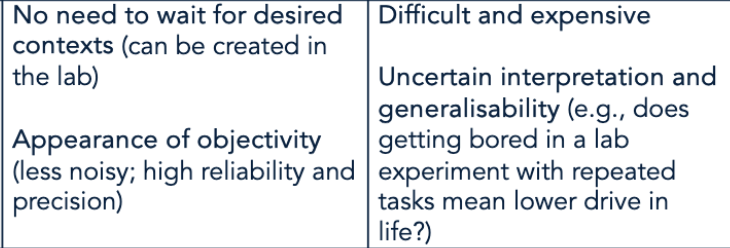Chapter 1: Approaches and intro
1/41
There's no tags or description
Looks like no tags are added yet.
Name | Mastery | Learn | Test | Matching | Spaced |
|---|
No study sessions yet.
42 Terms
Pers psyc vs. social psyc
Social psyc explores how external social contexts influence behavior. Pers psyc field focuses on the internal, stable patterns that distinguish individuals
3 questions in pers psyc
What are personality traits and mechanisms?
How do psychologists measure and study personality?
What are the major theoretical perspectives and future directions in research?
Personality Etymology
Personalite – late 14 th century: from Old French personalité, and Medieval Latin (personalitas) = “quality or fact of being a person”
1795: personnalité = “distinctive essential character of a self-conscious being”
Definition of personality
Personality refers to an individual’s characteristic patterns of thought, emotion, and behavior, together with the psychological mechanisms – hidden or not – behind those patterns
Put simply: what a person tends to do, feel, and think, over time and across relevant situations.
Personality psychology studies the whole person through the psychological triad
Basic approaches: Solution
Limit what you look at
Different basic approaches/paradigms
Bio approach
Understand mind through body
Psychoanalytic approach
Focus on the unconscious mind and internal mental conflict
Trait approach
How ppl differ psychologically
Phenomenological approach
Focus on ppl’s conscious exp of the world
Humanistic, cross-cultural
Humanistic approach
How conscious awareness produces uniquely human attributes
Cross-cultural
How the exp of reality differs across cultures
Founder: Galen
Humorism: systematically integrated the theory of the four vital bodily fluids (humors)—blood, yellow bile, black bile, and phlegm—into a comprehensive system of medicine
They though that excess or deficiency of any of the humors in a person can be a sign of illness (mental and physical)
Founder: James
Self & Identity (I & Me)
Freud
Psychoanalysis (Conscious, preconscious, unconscious)
Maslow
Self-actualization
John
Big Five Traits (summarize personality)
Are all these major advocates competitors or complement each other
They claimed their approach explains everything worth explaining
The big approaches to personality are not mutually exclusive
Each ignores many key concerns
Ultimately, they do not offer different answers to the same questions, but answer different questions!
One Big Theory (OBT)
The utopian dream of personality psychology: one big theory to explain it all
But – as in other parts of life – it is difficult for one thing to do everything well (e.g. iPhone vs iMac / camera)
Personality psyc Aim: Pers accounting for the whole person and real-life concerns (pros & cons)
pros: Inclusive, interesting, imp
cons: overwhelming , diff to manage, research can easily become unfocused or overly inclusive
Personality psyc Aim: Addressing focal research questions through separate paradigms/basic approaches (pros & cons)

Pers psyc aim: Emphasis on indv diff (pros, cons)
Pigeonholing — categorizing ppl (when they’re more complex than that)

Personality research method
Each method (Survey, interviews, obs, long, exp designs) comes with trade-offs. Some offer rich detail but are time-consuming, others are quick but may miss deeper nuances or be prone to bias
There are new trends and exciting innovations (technology, etc.)
Multicultural research simplify ppl by Eastern or Western. Not inclusive enough
Companies use personality testing to
Shape team dynamics (esp remote/hybrid workplaces)
Guide career development, hiring, and promotions
Encourage conversations abt team rela (introverts vs. extroverts)
The $2 Billion industry of Personality testing of Who You Are at Work
Scotiabank: Relies on Plum (psychometric test) instead of looking at resume for entry-level hires → more diversity in hires (more Black ppl and women)
Many tests lack scientific rigor (biased results), but modern tests (Big Five traits) are more research-based and fairer
Can spot “diamonds in the rough” (candidates w talent but without elite credentials)
Origin: WWI’s soldier screening
Read - Are personality tests actually useful?
Why ppl use pers tests?
Self-discovery (MBTI improved communication and collaboration in workplace)
Career guidances (therapists helping clients)
Scientifically valid alternatives: Big Five, RIASEC
Pers tests should beviewed as self-reflection, not definitive labels
Pers can evolve over time! So take tests again
Why Personality Research Methods are Necessary and effective (2 reasons)
Because they are what makes us scientists
Science is about the exploration of the unknown: looking at things that nobody has looked at before; for that we need to gather data and use sound analysis methods
This is what separates scientific research from technical training—memorising and applying what is already known)
Because mastering them might land you a job
Data in personality research
Mostly uni students in class in the past. Now, use technology. Collection of clues to answer sci questions
All data is flawed, imperfect, ambiguous clues. And our job is to gather as many clues as possible and put them together
Four general types of personality data
Ask the person directly: self-reports (S data)
Ask someone who knows: informants’ reports (I data)
Obtain real-life facts: life outcomes (L data)
Watch what the person does: behavioural data (B data)
S Data (Self reports)
Usually questionnaires or surveys
High face validity; most common data type in personality research
Advantages of S data
Large amount of information (you are always with yourself and are your best expert)
Direct access to thoughts, feelings, and intentions
High face validity
For some characteristics: definitional truth (e.g. self-esteem)
Causal force (self-perceptions can create their own truths that affect the psychological triad; e.g., self-efficacy) (e.g. don’t wanna be a doctor → most likely is not gonna be a doctor in the future → truth!)
Simple and easy to collect
Disadvantages of S data
Bias (overly positive or negative self-perception; desire for privacy / faking)
Error (fish-and-water effect; distortion of memory; lack of self-insight; carelessness)
Overuse (too simple and too easy to collect)
I Data (Informants’ reports)
Acquaintances, friends, family, co-workers, clinical psychologists
No training or expertise needed
May be more accurate than self-judgments for extremely desirable or undesirable traits
Judgments: Based on observing ppl in whatever context one knows them from (the grumpy person is not usually like this, but cuz they’re sick. Only close one knows)
Used frequently in daily life
Advantages of I data
Large amount of information (many behaviors in many situations; judgments from multiple informants possible)
Real-world basis (not from contrived tests or constructed and controlled environments; more likely to be relevant to important outcomes)
Common sense (takes context into account)
Definitional truth (informants have natural authority; e.g., charm, likeability) (the grumpy person is not usually like this, but cuz they’re sick. Only close one knows)
Causal force (reputation affects opportunities and expectancies; expectancy effects)
Disadvantages of I data
Limited behavioural information (e.g., co-worker / mom will not see all of you)
Lack of access to private experience (e.g., unspoken thoughts, feelings)
Error (more likely to remember extreme, unusual, or emotionally arousing behaviours)
Bias (letter of recommendation effect, prejudices and stereotypes)
L Data (Life outcomes)
Obtained from archival records (e.g., crime / tax / marriage register) or self-report
The results – or “residue” – of personality
Advantages of L data
Objective and verifiable
Intrinsic importance (these are things that really matter)
Psychological relevance (these are things that are usually affected by – and uniquely informative about – psychological traits)
Disadvantages of L data
Multidetermination (life outcomes have many causes)
Access (records of interest may not exist or you may not get access)
B data (Behavioural observation)
“The most visible indication of an individual’s personality is what they do”
Information that is carefully and systematically recorded from direct observation – in daily life or in a lab
Natural B data (based on real life) (+, -)
Examples: diary and experience-sampling methods; wearable cameras and audio recorders; digital footprints (e.g., social media)

Laboratory B data
Examples: experiments (create situation that represents real-life context and observe reaction), physiological measures (e.g., heart rate

4 Personality tests
Implicit Association Test
Thematic Apperception Test: Write a story out of an ambiguous picture
Personality – Describing yourself: Write for 15 mins about who you are, features of life and personality, and thoughts, emotions, and behaviors of yourself.
Personality Inventory: Classic most common questionnaire. “I see myself as someone who..” agree 5 – disagree 1
Barnum Effect
The phenomenon that occurs when individuals believe that personality descriptions apply specifically to them (more so than to other people), despite the fact that the description is actually filled with information that applies to everyone